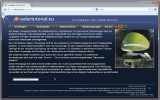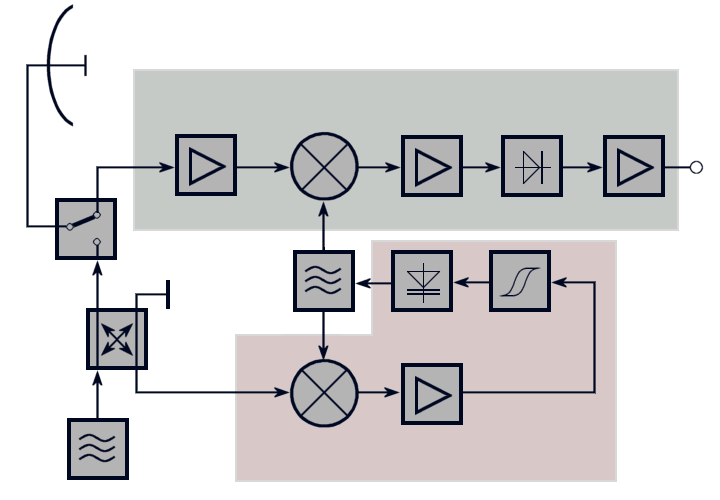Chapter: Radar Receiver Technology

Figure 1: Preview of internet representation


Figure 1: Block diagram of an automatic frequency control in radar set
Chapter: Radar Receiver Technology
The function of the receiver is to take the weak echoes from the antenna system, amplify them sufficiently, detect the pulse envelope, amplify the pulses, and feed them to the indicator. The receivers used in radars are capable of accepting weak echoes and increasing their amplitudes by a factor of 20 or 30 million. Since radar frequencies are not easily amplified, a superheterodyne receiver changes the radio frequency to an intermediate frequency for amplification.

Figure 2: Block diagram of an automatic frequency control in radar set.
Learning objectives:
The learning objectives serve as a preview of the information you are expected to learn in the chapter. This chapter provides the basis for understanding the specific radar receivers. Upon completion of this chapter, the student will be able to:
- list the basic design requirements of an effective radar receiver;
- describe the fundamental heterodyning process;
- list the major sections of a typical radar receiver;
- using a block diagram, describe the operational characteristics of a typical radar receiver.
Table of Contents
![]() http://www.radartutorial.eu/09.receivers/rx04.en.html Requirements for Radar receivers
http://www.radartutorial.eu/09.receivers/rx04.en.html Requirements for Radar receivers
![]() http://www.radartutorial.eu/09.receivers/rx05.en.html Superheterodyne Receiver
http://www.radartutorial.eu/09.receivers/rx05.en.html Superheterodyne Receiver
![]() http://www.radartutorial.eu/09.receivers/rx06.en.html Image-Frequency Interferences
http://www.radartutorial.eu/09.receivers/rx06.en.html Image-Frequency Interferences
![]() http://www.radartutorial.eu/09.receivers/rx07.en.html Double Heterodyning
http://www.radartutorial.eu/09.receivers/rx07.en.html Double Heterodyning
![]() http://www.radartutorial.eu/09.receivers/rx08.en.html Gain Control Methods
http://www.radartutorial.eu/09.receivers/rx08.en.html Gain Control Methods
![]() http://www.radartutorial.eu/09.receivers/rx09.en.html Noise in Cascaded Amplifiers
http://www.radartutorial.eu/09.receivers/rx09.en.html Noise in Cascaded Amplifiers
![]() http://www.radartutorial.eu/09.receivers/rx11.en.html Automatic Frequency Control
http://www.radartutorial.eu/09.receivers/rx11.en.html Automatic Frequency Control
![]() http://www.radartutorial.eu/09.receivers/rx12.en.html Receiver Channels
http://www.radartutorial.eu/09.receivers/rx12.en.html Receiver Channels
![]() http://www.radartutorial.eu/09.receivers/rx50.en.html Special Features for a Linear Receiver
http://www.radartutorial.eu/09.receivers/rx50.en.html Special Features for a Linear Receiver
![]() http://www.radartutorial.eu/09.receivers/rx90.en.html Summary
http://www.radartutorial.eu/09.receivers/rx90.en.html Summary
![]() http://www.radartutorial.eu/09.receivers/rx98.en.html Training questions
http://www.radartutorial.eu/09.receivers/rx98.en.html Training questions
